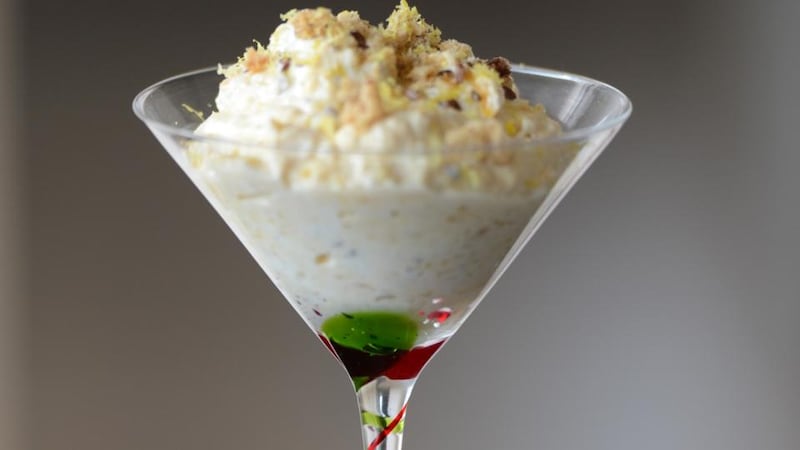It may have helped the medicine go down on the big screen in 1964, but today the video Sugar: The Bitter Truth has had a remarkable 3.6 million hits on YouTube.
Its presenter, Dr Robert Lustig, professor of paediatrics specialising in endocrinology and author of Fat Chance: the bitter truth about sugar, explores the damage caused by sugary foods and drinks.
His 90-minute lecture stresses a major factor of the obesity pandemic: too much sugar and not enough fibre. The debate rages on in the US, fuelling consumers’ fears about sugar and leaving many convinced that it is poison.

Lustig vilifies not just white granulated table sugar or sucrose but also high-fructose corn syrup, "the most demonised additive known to man", or, as Washington Post nutrition columnist Sally Squires put it, ''the floozy of the sugar world: sweeter and cheaper than sucrose''.
Found in range of foods
Lustig believes the "fructosification of our food supply increases its palatability and low-quality foods have high-fructose corn syrup added".
It can appear in ingredients lists as “glucose-fructose syrup”, “high-fructose corn syrup” or ‘HFCS’.
Today in America fructose is found in a range of foods from carbonated beverages to commercial baby foods. “The increase in fructose intake is worrisome,” says Lustig, “because it suspiciously parallels increases in obesity, diabetes, and a new condition called nonalcoholic fatty liver disease that now affects up to one-third of Americans.”
However, although higher intakes of fructose are associated with these conditions, this does not prove causation.
The US Corn Refiners’ Association, which represents firms that make HFCS, has petitioned the US Food and Drug Administration to start calling the ingredient “corn sugar” instead of “syrup” arguing that a name change is the only way to improve its image among consumers.
In 2008 the American Journal of Clinical Nutrition published a supplement examining HFCS. It concluded there was no evidence to suggest HFCS is any different from table sugar.
Longer-term studies
However, it did acknowledge that longer-term studies on the connection between HFCS and body weight had not been conducted.
Marion Nestle, a professor in New York University's department of nutrition and a prominent food industry critic, believes "Americans consume too much of all types of sugar, but there is no meaningful biochemical difference between table sugar and HFCS".
But because the US corn farmers are heavily subsidised, HFCS is cheap. As a result, it is used in so many foods, from crackers to fizzy drinks, that it has become one of the biggest sources of calories in the American diet.
We have yet to see HFCS make a real contribution to the Irish and UK food markets, where consumption is still relatively low.
Nutritional villain
The effect of sugar consumption on weight was examined by the British Medical Journal in January this year. A key conclusion was that sugar in liquid form, such as HFCS, was particularly likely to lead to weight gain in children and adults.
Sugar in this form does not induce satiety to the same degree as it would in solid food. It’s easy to understand how HFCS has become a nutritional villain because this is the type of sugar usually found in soft drinks and sports drinks.
A high intake of sugar is almost certainly harmful to health. Irrespective of the type, sugar is strongly linked to obesity, heart disease and diabetes.
If we are to label particular sugars as not only empty calories but in fact poisonous, we need more research to explore the physiological impact of different sugars on blood sugar, insulin levels and metabolism.
But we need to accept the fact that our sugar intake is not the only driver of the obesity pandemic.
It’s difficult to make a dessert without using some form of sugar. If possible, use foods that naturally contain sugar, such as various fruits, as they contain other nutrients as well. Try to eat smaller servings, less frequently if you are trying to lose weight – and cut out the sugary drinks.
RECIPES
Apricot fool with ground linseeds
Serves 4
This recipe uses dried apricots, but opt for fresh when in season – stone them, simmer gently in 2tbsp of apple juice, and use as described here.
Ingredients
175g (6oz) dried apricots
200ml (7 fl oz) water
Finely grated rind of 1 lemon
450ml (3/4 pint) low fat Greek yoghurt
2tsp linseeds
4 oat biscuits, to serve
Method
1. Put the apricots in a saucepan with the water and simmer slowly for 10-12 minutes, or until the apricots are soft but not overcooked.
Add extra apple juice or water if necessary. Roughly mash or blend the apricots to a puree. Set aside to cool.
2. Add the lemon rind to the yoghurt and mix together. Grind the linseeds using a pestle and mortar until crushed and split but not a powder.
If you don't have a pestle and mortar, put them in a bowl and crush with the end of a rolling pin.
3. Roughly fold the apricots into the yoghurt mix. Add three-quarters of the linseeds halfway through folding in, then spoon into four dessert glasses and chill for two hours.
Serve topped with the remaining linseeds and crushed oat biscuits.
Easy baked pears
Serves 4
Ingredients
4 ripe pears
100g ricotta
Honey for drizzling
4 Amaretti biscuits
1tsp ground cinnamon
Method
1. Preheat the oven to 190°C. Cut each pear in half, then place them cut-side up on a large baking sheet. Use a teaspoon to scoop out the cores and make a dip in the centre of each.
Dollop about one teaspoon of ricotta into each dip, then sprinkle over the cinnamon and drizzle with a little honey.
2. Roast the pears in the oven for 10 minutes. Meanwhile, put the biscuits into a food bag or use a rolling pin to crush them lightly.
Remove the pears from the oven and scatter the crumbs over each pear.
3. Return to the oven for another 10 minutes or until the pears are soft and the biscuits are golden brown.
Serve drizzled with honey.
Paula Mee is a dietitian and a member of the Irish Nutrition and Dietetic Institute. medfit.ie Tweet @paulamarymee










